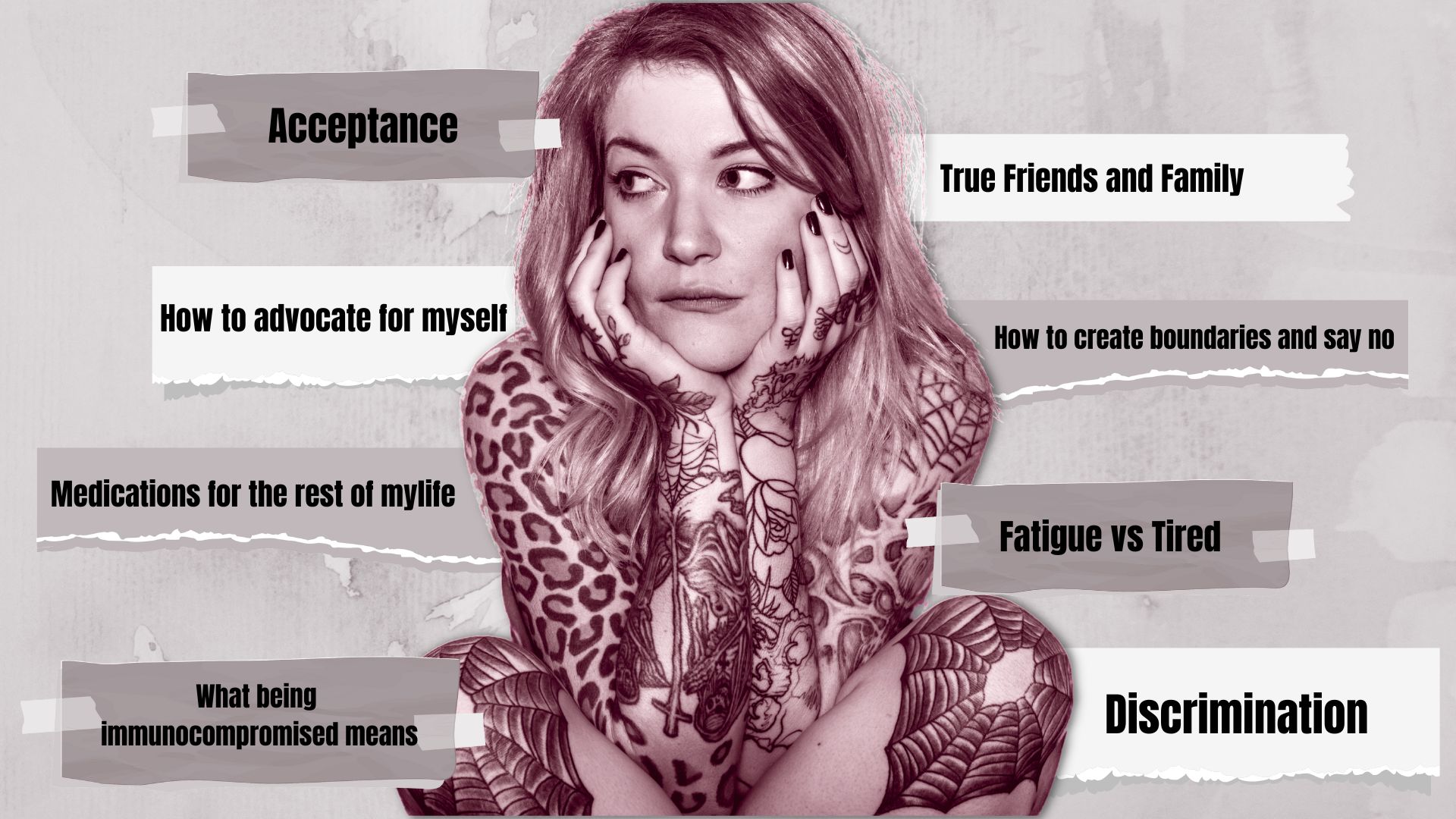Most people take a few days off work when they have the flu or leave the office a little early when they have a headache or their back hurts. But what happens when that flu-like feeling never goes away — and is accompanied by a lot more symptoms that also never go away?
I first started to feel the effects of rheumatoid arthritis in my mid-twenties. I figured the pain and fatigue were from not exercising or eating healthy enough. Back then, I felt naively invincible. I always had an answer, an excuse, a justification for my pain.
My job as an esthetician was very physical in nature, so it was easy to blame my pain on that. During a typical work day, you’d find me hunched over doing pedicures and other repetitive tasks like deep tissue massage. I was getting used to these “repetitive injuries” that went away but then came back again. Eventually got tired of being told the pain that wouldn’t go away was just a repetitive injury.
This led to my being diagnosed with rheumatoid arthritis at the age of 29. I would quickly learn that the pain I was experiencing was actually from unchecked inflammation in my joints running rampant and causing irreversible damage.
The Physical and Emotional Effects of Rheumatoid Arthritis
My RA symptoms hit me like a truck after the birth of my son, a month shy of my 27th birthday. It’s common for women to be diagnosed with RA shortly after childbirth.
I knew something was wrong when I could never hold my son without being in pain. I struggled to strap him into a car seat or stroller. I never could wear him in a carrier and I envied other mothers who could. The pain started in my feet and ankles; when I woke up, they would be sore, achy, and difficult to walk on. Each step felt like walking on a bed nails.
When I attempted to return to work after a year of maternity leave (I’m from Canada) I was shocked to see that I could no longer do my job.
I struggled to make it to work on time or handle a full shift. Pain or exhaustion always took over.
I could barely grasp tweezers to remove my clients’ unwanted hair. The massages I used to do all day long began to hurt me, and so I began to dread scheduling them. My hands felt like they were stuck in a vice trying to pull each joint apart. I constantly dropped things or forgot important steps or facts (brain fog is common in inflammatory diseases like RA). Sometimes I felt too tired to communicate a sentence to my clients after a heavy task.
I was emotional, often crying in the staff room complaining of being in pain or feeling sick again and again. I wanted to sleep all day and never felt refreshed no matter how many days of work I started to miss. I was constantly catching a cold which would take forever to go away. I had painful cystic acne that wouldn’t go away, even though I was a skin care therapist.
Basically: I couldn’t function anymore.
I knew I needed to ask my family doctor to look more into my chronic pain. I went to Dr. Google for a way to describe my symptoms and saw that they matched with the symptoms of rheumatoid arthritis. Then I realized my aunt also had rheumatoid arthritis, and family history is an RA risk factor. I asked my family doctor for a blood test and referral to a rheumatologist without really realizing how badly I needed one.
Deciding to Go on Disability for Rheumatoid Arthritis
By the time my doctor diagnosed me with rheumatoid arthritis, my body felt like it was crumbling from the inside out. I knew I wouldn’t be working as an esthetician any more. I was in so much pain at that time, I couldn’t imagine being able to keep working. But as a single mom to a young son — a toddler at the time — I also couldn’t imagine not earning any money to support us.
I felt grateful when my doctor brought up the idea of going on disability to me — “after all, you have a son to look after,” I remember her pointing out. At first, I didn’t understand what she really meant by that, but now I do after several years living with RA.
Not a day goes by that I don’t miss my career and the fulfillment it used to give me, but I’ve come to accept that going on disability at age 29 was the right choice for me and my family.
There is a lack of understanding and compassion when you tell others you are on disability, especially with an invisible disease like rheumatoid arthritis or one with such misconceptions that it’s “not very serious” or that “arthritis only affects old people.”
So let me explain why I can’t work a so-called “normal” job while managing my rheumatoid arthritis.
1. My full-time job is taking care of my health and being a good mom to my son Jacob
It took me four years and 18 different medications for me to start to find relief after my diagnosis. Seeing a series of different doctors and specialists, managing medication trial and error, and making lifestyle changes as part of my treatment plan — including exercising and eating healthier — is my full-time job.
2. Brain fog is real
Unless you have concentration and memory issues from a chronic illness it’s hard to comprehend what this is like. Many people feel groggy in the morning or as though they can’t form a proper sentence until they’re adequately caffeinated, but the brain fog I and others with inflammatory arthritis experience is different. This daunting feeling intimidates us and slows us down all day long.
3. RA has physically changed my joints
In that time that my disease went untreated or the series of treatments I tried failed to control the progression of my RA, my joints have undergone irreversible damage. I can’t stand for long periods of a time. I can’t sit for long periods of time. My hands and feet just don’t work like they used to.
4. I struggle with the emotional toll of RA
For many patients, rheumatoid arthritis comes with anxiety and depression. For me, coping with depression related to my RA was as much of a struggle as dealing with the physical symptoms like joint pain and fatigue. I saw therapists and tried different medications. I struggled with thoughts of suicide. This emotional toll also makes me constantly question what I can handle because of flare fear.
5. Every day is unpredictable
Not every day with RA is the same. I have good days and I have bad days. A good day can quickly devolve into a bad one. Unfortunately I can’t always predict when this will happen. Often doing one activity on a given day will then require me to take a day or two of rest to recover from it. I am reliable; my disease is flaky.
6. RA isn’t ‘just’ arthritis
Each case of chronic illness is different and often one major diagnosis comes with a lot of comorbidities, or co-occurring diseases. Since my diagnosis I have also been hit with osteoarthritis, fibromyalgia, major depressive disorder, and Raynaud’s syndrome. Let’s also not forget how the body-wide inflammation from RA can also affect major organs, not just joints. For example, heart disease and lung disease are common complications of RA.
7. RA makes it difficult to even fight off even a cold
Because of my lowered immune system, I am more susceptible to risks of infection, such as the common cold or flu. This means I get sick a lot and it takes me longer to fight it off, on top the daily challenges of my disease symptoms. The more people I am around, the more germs I’m exposed to. Be kind, get your flu shot, you never know who is at risk.
8. Managing fatigue is one of the trickiest aspects of living with a chronic illness
I am definitely not lazy. But my RA makes me need frequent naps or moments of rest. I often struggle to perform the simplest tasks because of this invisible culprit. My energy has to go toward being a mother and the functions of basic living.
Of course there are other plenty of RA patients who continue to work while managing their disease or can have more children after they’re diagnosed. But right now, I can’t. It’s not helpful for me when others point out these other patients, applauding them for “just pushing through it.” The truth is that chronic disease affects everyone differently, and judging doesn’t help anybody.
No one should be made to feel like a burden when hit with this disease. I know what is best for my body and my mind.
And I’m not alone. Arthritis is the number-one cause of long-term disability in North America for working-age adults, and there are over 100 forms of arthritis.
Believe me, I want to work. But it’s not going to be as an esthetician. RA changed my life in a million ways, big and small, bad and good. I want to put my energy now toward improving treatments for arthritis and helping fellow patients cope, adjust, and thrive. I’ve become an advocate and volunteer with arthritis organizations in my area, focusing on ways I can move forward, give back to society, and support those who are new to this world of arthritis. I’ve found joy in writing, painting, and exercising.
I often mourn all that I used to be able to do, but this is my life now. I have to fight today and tomorrow and keep looking and moving forward, no matter what.






